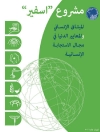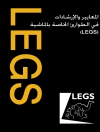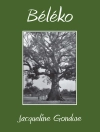These essays consider the Godzilla films and how they shaped and influenced postwar Japanese culture, as well as the globalization of Japanese pop culture icons. There are contributions from Film Studies, Anthropology, History, Literature, Theatre and Cultural Studies and from Susan Napier, Anne Allison, Christine Yano and others.
Mục lục
Introduction; W.M.Tsutsui When Godzilla Speaks; S.Napier Mobilizing Gojira: Mourning Modernity as Monstrosity; M.Anderson Gojira as Japan’s First Postwar Media Event; B.Kushner Lost in Translation and Morphed in Transit: Godzilla in Cold War America; S.Guthrie-Shimizu Wrestling with Godzilla: Intertextuality, Childish Spectatorship, and the National Body; A.Gerow Mothra’s Gigantic Egg: Consuming the South Pacific in 1960s Japan; Yoshikuni Hybridity and Negotiated Identity in Japanese Popular Culture; J.Boss Teaching Godzilla: Classroom Encounters with a Cultural Icon; J.Bernardi ‘Our First Kiss Had a Radioactive Taste’: Ohashi Yasuhiko’s Gojira in Japan and Canada; K.J.Wetmore Jr. Godzilla Meets Super-Kyogen, or How a Dinosaur Saved the World; E.Rath Monstering the Japanese Cute: Pink Globalization and Its Critics Abroad; C.Yano Kikaida for Life: Cult Fandom in a Japanese Live-Action TV Show in Hawai’i; H.Katsuno Apocalypsis in Fantasy and Reality: Japanese Pop Culture in Contemporary Russia; Y.Mikhailova Epilogue: He Did the Stomp, He Did the Monster Stomp; T.C.Bestor
Giới thiệu về tác giả
WILLIAM M. TSUTSUI is Associate Professor of History at the University of Kansas, USA. He is also the author of
Godzilla on My Mind (Palgrave Macmillan, 2004) and two books on Japanese history.
MICHIKO ITO is Japanese Studies Librarian at the University of Kansas, USA.












